The travel and tourism industry is slowly recovering from the Covid-19 pandemic with more and more holidaymakers and travellers eager to make up for lost time during the pandemic.
However, many difficulties remain in 2023. In the hotel industry, achieving pre-pandemic performance is hindered by a number of challenges, ranging from experience and personalisation issues to rising operational costs to constantly changing customer demands. The path to recovery is far from smooth.
In this blog, we’ll focus on eSIMs and their potential to help hotels and other accommodation providers achieve their goals.
What is eSIM?
eSIM is a revolutionary technology that replaces the physical SIM cards traditionally used in mobile devices. It’s a digital SIM embedded directly into devices, enabling users to switch between mobile carriers without needing a physical SIM card swap. In the context of the travel industry, eSIMs offer an alternative to expensive international roaming plans, making connectivity seamless and hassle-free.
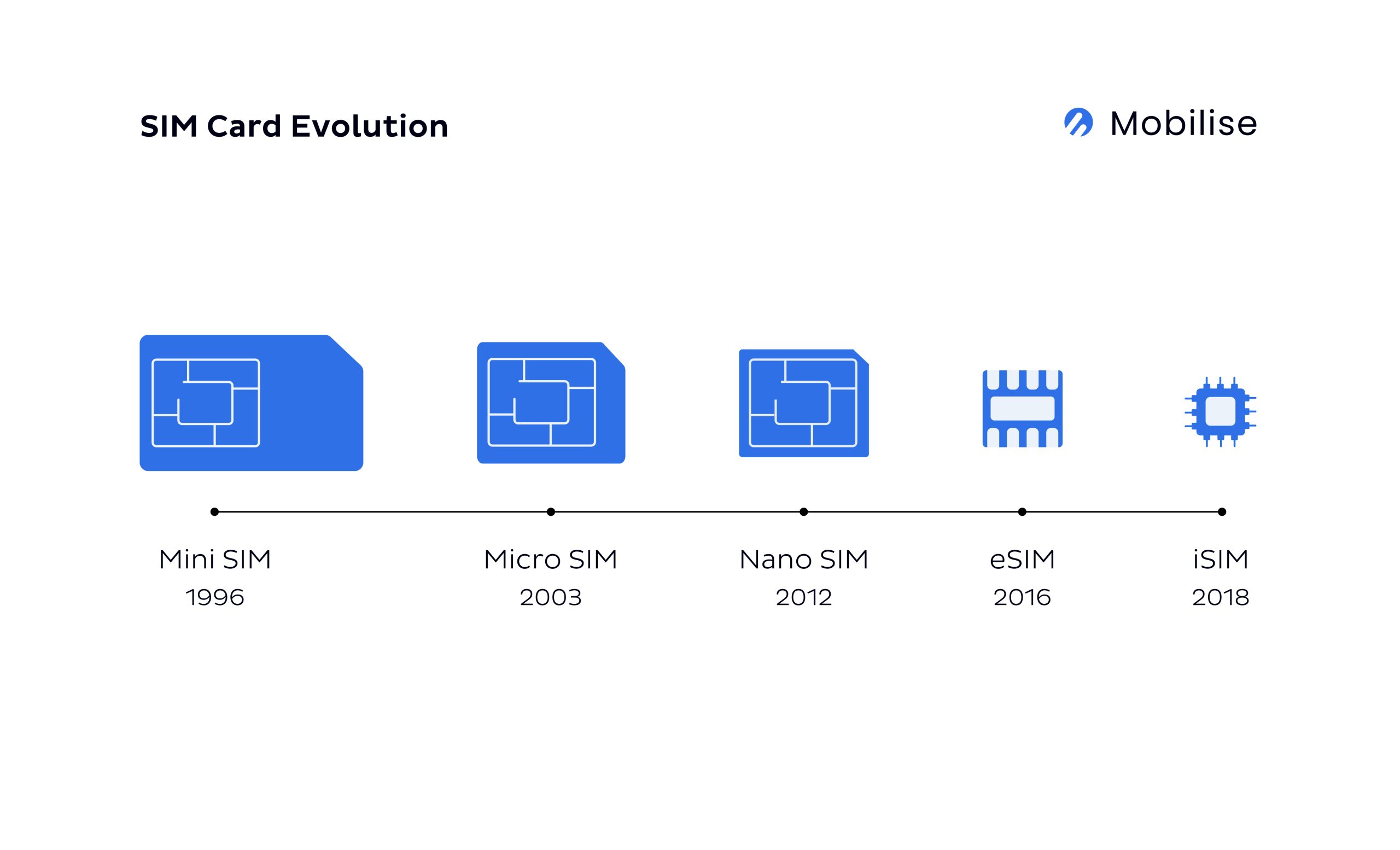
FIND OUT MORE ABOUT ESIM
What are the benefits of eSIM for consumers?
- Seamless mobile connectivity while travelling
- Easy to purchase, activate and use, the entire process takes place online and digitally
- No global roaming charges
- No need for dual or multiple phones
- No need for local SIM cards
- No need to rely on public Wi-Fi
- More secure than traditional SIM card
- Better user experience
RECOMMENDED READING
How can eSIMs help the hotel industry?
Experience and personalisation
Experience and personalisation are the new battlegrounds between competing hotels. Consumers increasingly want a perfect guest experience and personalisation from their hotel.
One way to do this is to introduce eSIMs. A hotel eSIM could play a pivotal role in enhancing customer experience by enabling seamless connectivity, personalised services, and even room access through digital keys. Offering guests a complete experience all from the comfort of their mobile device.
Not only that, but hotels can also send tailored offers, discounts, and information directly to their guests’ devices through their apps. Those who can deliver an experience that stands out will be the winners in the fiercely competitive hotels market.
Changing customer needs
Modern guests have modern needs. And the Internet has led to major changes in what guests want from hotels. One of the main things is a reliable and secure connection to the internet.
81% of travellers consider internet access to be “essential” or “very important” when choosing travel destinations. On top of this, HighSpeedInternet also found that 84% of respondents are less likely to book a hotel room if online reviews showed the accommodation had poor internet or no internet at all.
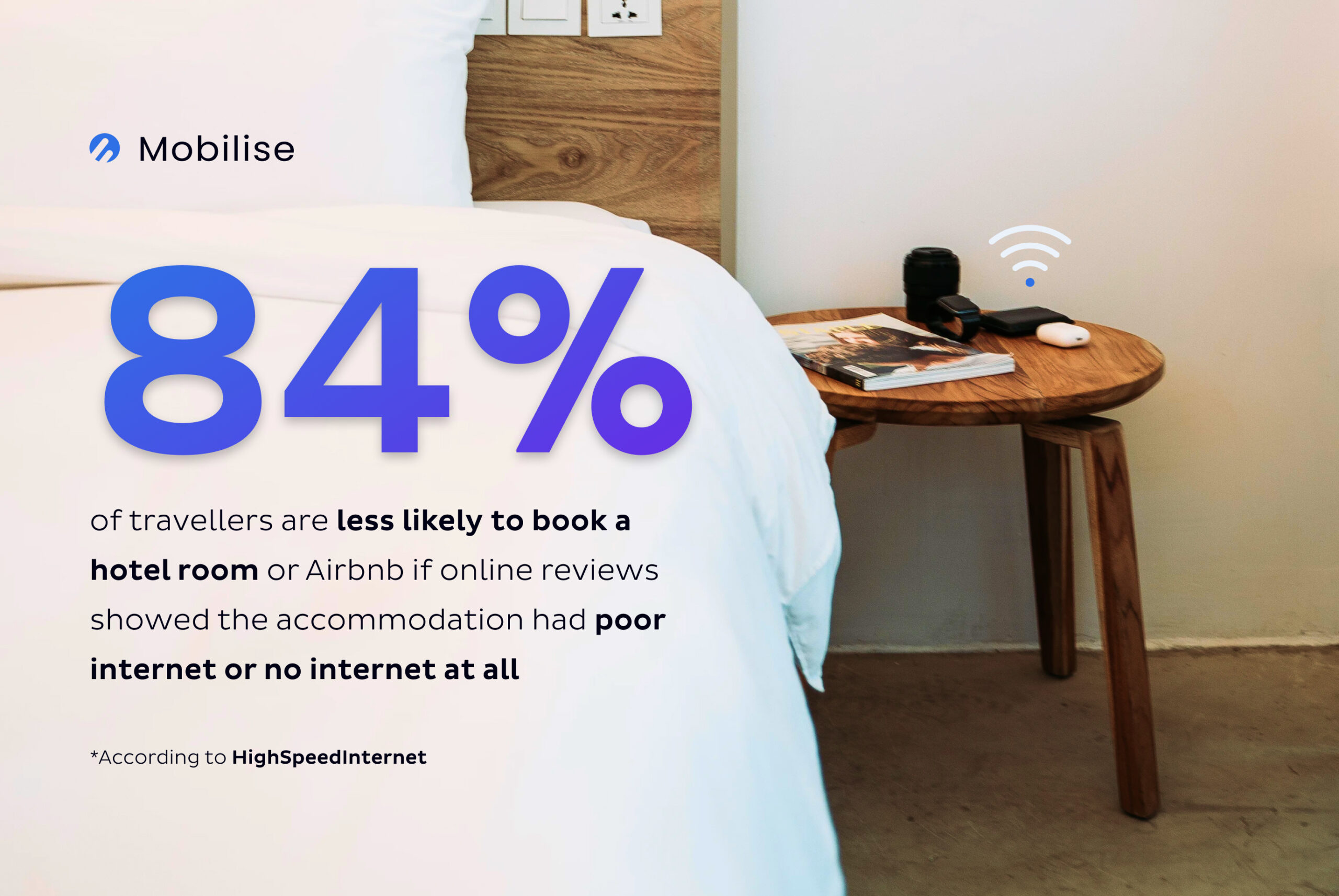
Not only that, but customers have also come to expect unique experiences from their hotels – things that are ‘outside the box’. eSIM, for example, is a unique experience that can provide guests with seamless connectivity to the internet.
Post-pandemic recovery
Going back to pre-pandemic numbers is a struggle for any business in the tourism and travel industry.
Hotels suffer mostly due to the shift towards remote and hybrid working models and thus decreased business travel until more recently. 16% of companies worldwide are fully remote, whereas 58.6% of the entire US workforce is remote. Moreover, these figures are only set to trend up further, with 78% of companies expecting this shift to continue.
However, eSIMs provide an opportunity for hotels to reinvent themselves and offer co-working spaces to attract a local clientele that needs a break from working from home as well as digital nomads. According to Two Tickets Anywhere, there are an estimated 35 million digital nomads worldwide.
Hotels that want to seize remote working opportunities will require technology that makes keeping in contact as simple as possible. Developing a hotel eSIM add-on for guests can help hotels remain competitive in times when many accommodation businesses are falling into administration. Building resistance and constantly innovating with the right technologies is the key to survival.
Lower operational costs
Thanks to inflation and rising prices, hotels need to find ways to tackle the issues of higher operational costs. One way to tackle the issue is to take advantage of eSIMs and decrease your Wi-Fi costs.
Forbes found that 40% of respondents had their information compromised while using public Wi-Fi.
Offering guests a more secure alternative to Wi-Fi through eSIMs is a great way to lower costs. The hard work is all carried out by the experts with your unique requirements in mind.
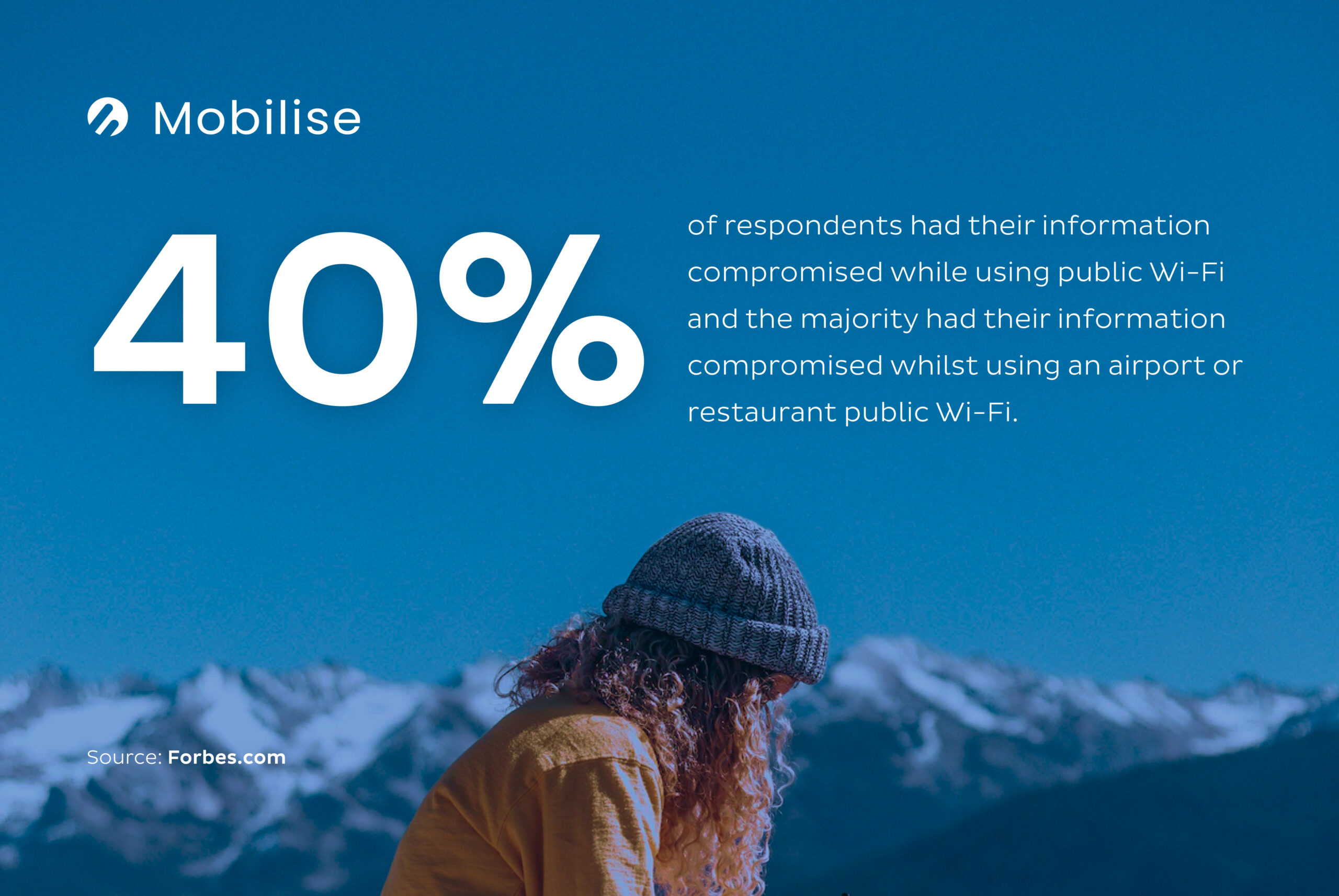
RECOMMENDED READING
Mobilise's eSIM SDK - A proven Embedded Connectivity solution for all!
Loyalty program
Offering new and existing customers the exclusivity of joining a loyalty program is a great way to increase retention rates. Hotels can integrate eSIMs into their loyalty programs, offering exclusive benefits to loyal guests.
This not only ensures seamless connectivity during a guest’s stay but also grants them access to an array of exclusive benefits to keep your guests coming back for more.
A premium feature
eSIMs can be positioned as a premium feature, bundled with attractive data plans to target high-spending customers seeking a top-notch experience.
Guests who opt for this premium eSIM feature gain access to attractive data plans, ensuring they stay connected wherever they go. Whether it’s for business, leisure, or a bit of both, these travellers can roam freely without the hassle of purchasing local SIM cards or dealing with costly international data roaming charges.
By offering eSIMs as a premium feature, hotels not only enhance the guest experience but also tap into an opportunity to generate additional revenue. It’s a win-win scenario where guests receive a top-tier service, and hotels can further cater to the needs of their high-spending clientele.
Employee communication
eSIMs can be used to make communication between hotel employees more efficient. All it takes is to equip all employees with an eSIM. It’ll make it swift and easy to communicate between employees, access important information and a lot more contributing to improved collaboration and thus increased productivity.
Why go for eSIM?
Growing market size
Statistics and predictions point towards a significant expansion of the eSIM market in the coming years. A report by Market.us Research shows that the eSIM market is projected to grow to reach $20.6 billion USD by 2032. Another report by Straits Research forecasted the eSIM market to grow at an estimated CAGR of 10.2% from 2022 to 2030.
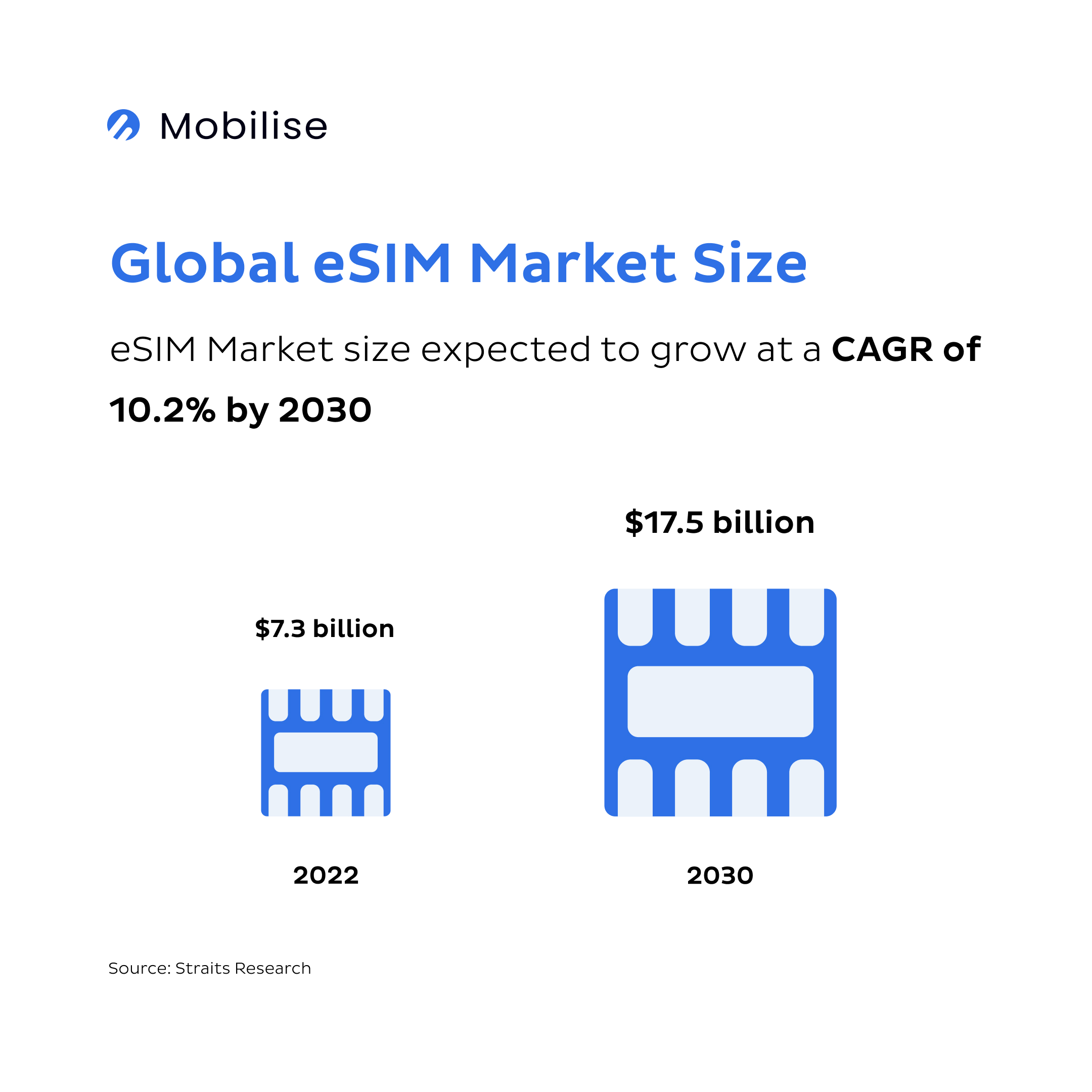
eSIM – a huge opportunity for the travel sector
A recent report from Kaleido Intelligence shows that thanks to eSIM aggregators, the travel SIM market is predicted to be worth around $10 billion by 2028. This emphasises the potential of eSIM for the travel sector to capitalise on, with a predicted 500% increase in spending on travel eSIMs.
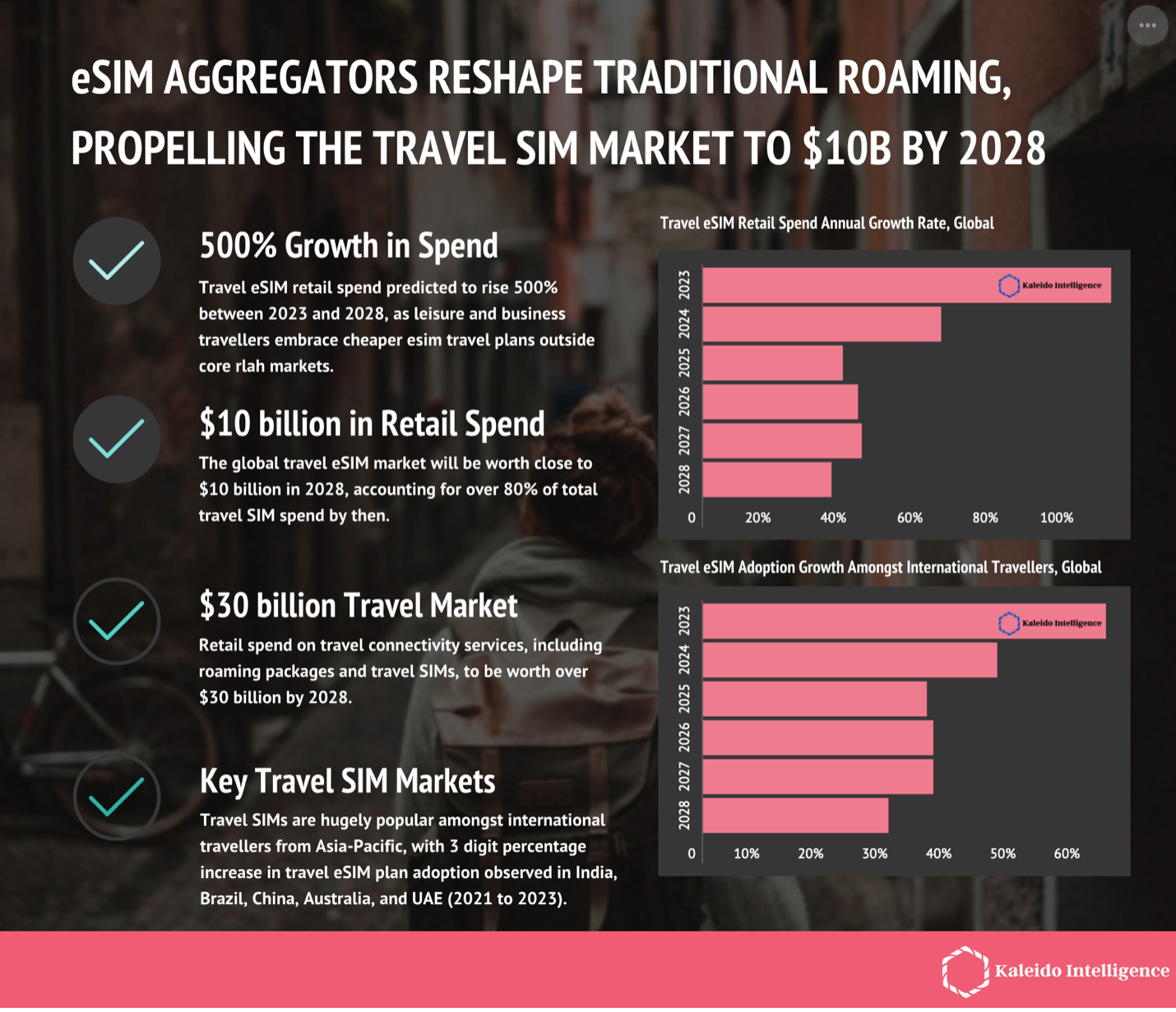
Growing number of eSIM-capable devices
Our research showed that the number of eSIM-compatible smartphone models has almost doubled since 2020, from 43 models to 82 in 2023. Clearly highlighting the growing acceptance of eSIM from both smartphone manufacturers and consumers. Paving the way is Apple with their eSIM-only iPhone 14 released to the US market and rumours of an eSIM-only iPhone 15 for several European countries.
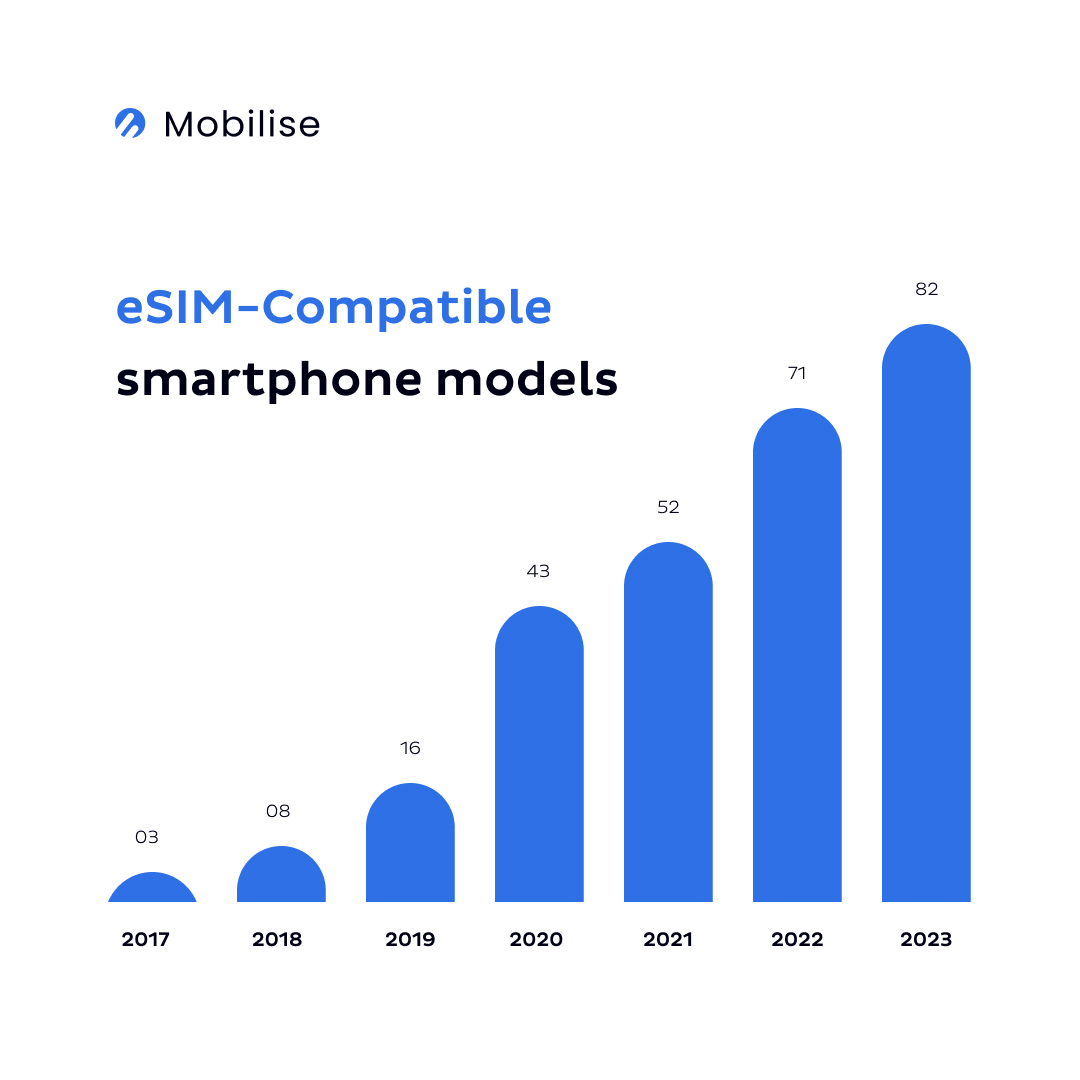
Higher affordability of eSIM-enabled smartphones
As technology advances, these devices become progressively cheaper, making eSIM-compatible smartphones more accessible to a broader demographic.
Travellers tend to be part of the more affluent customer segment, 44% of which place a higher level of importance on travel since the pandemic. These travellers often have higher disposable incomes to invest in newer and flagship smartphones.
This aligns perfectly with the seamless connectivity and enhanced experiences that eSIMs can offer, making them a compelling choice for travellers and a strategic advantage for hotels looking to cater to their tech-savvy clientele.
Growing awareness of eSIM
Thanks to Apple’s eSIM-only iPhone 14 release in the US last year and this year’s iPhone 15 is rumoured to be eSIM–only in a number of European countries, it’s only a matter of time until eSIM will really take off and be omnipresent.
According to GSMA Intelligence, across seven major markets, 36% of consumers are aware of eSIM, which has increased from 20% in 2020.
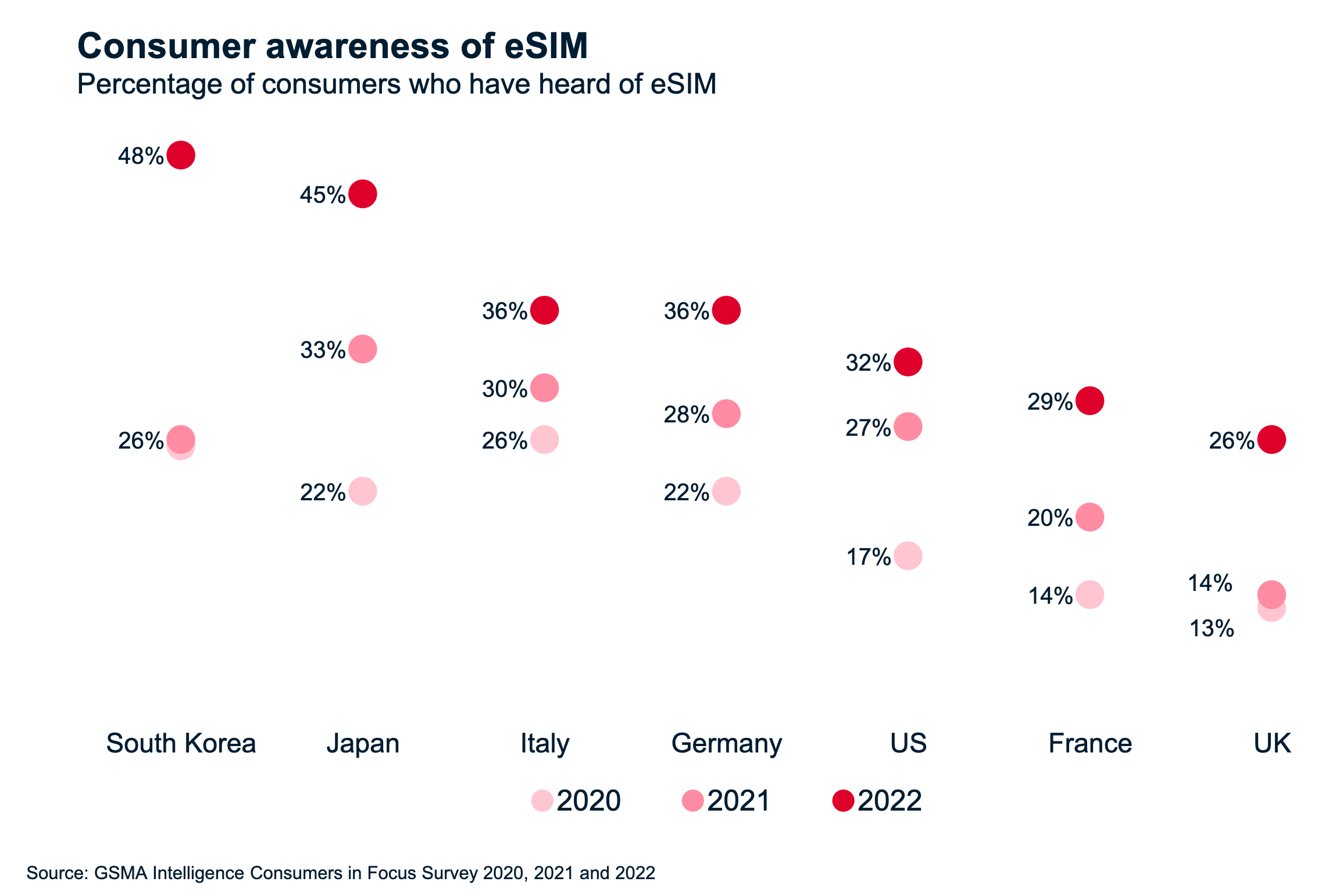
A more environmentally friendly option
eSIMs are a far more sustainable option compared to plastic SIM cards.
The SIM card industry contributes to around 140,000 tonnes of CO2e emissions per annum. Each SIM card has a carbon footprint of 229 grams during its 3-year lifetime.
eSIMs on the other hand, only have a carbon footprint of 123 grams during its 3-year lifetime. This means plastic SIMs have a 46% higher carbon footprint.
Consumers are now becoming far more conscious buyers and favour environmentally friendly alternatives where possible. On average, 11% of consumers consider sustainability as the most important feature of eSIMs.
Solution – eSIM SDK
With our eSIM SDK (software development kit), we can help the travel industry to embed connectivity quickly and efficiently. Our solution is pre-built and can be easily plugged into any app through APIs, seamlessly integrating with a hotel’s existing app UX and UI.
Our SDK does all the heavy lifting and removes the complexity, allowing any hotel or accommodation provider to easily take advantage of what connectivity has to offer all while ensuring a smooth experience for your guests.
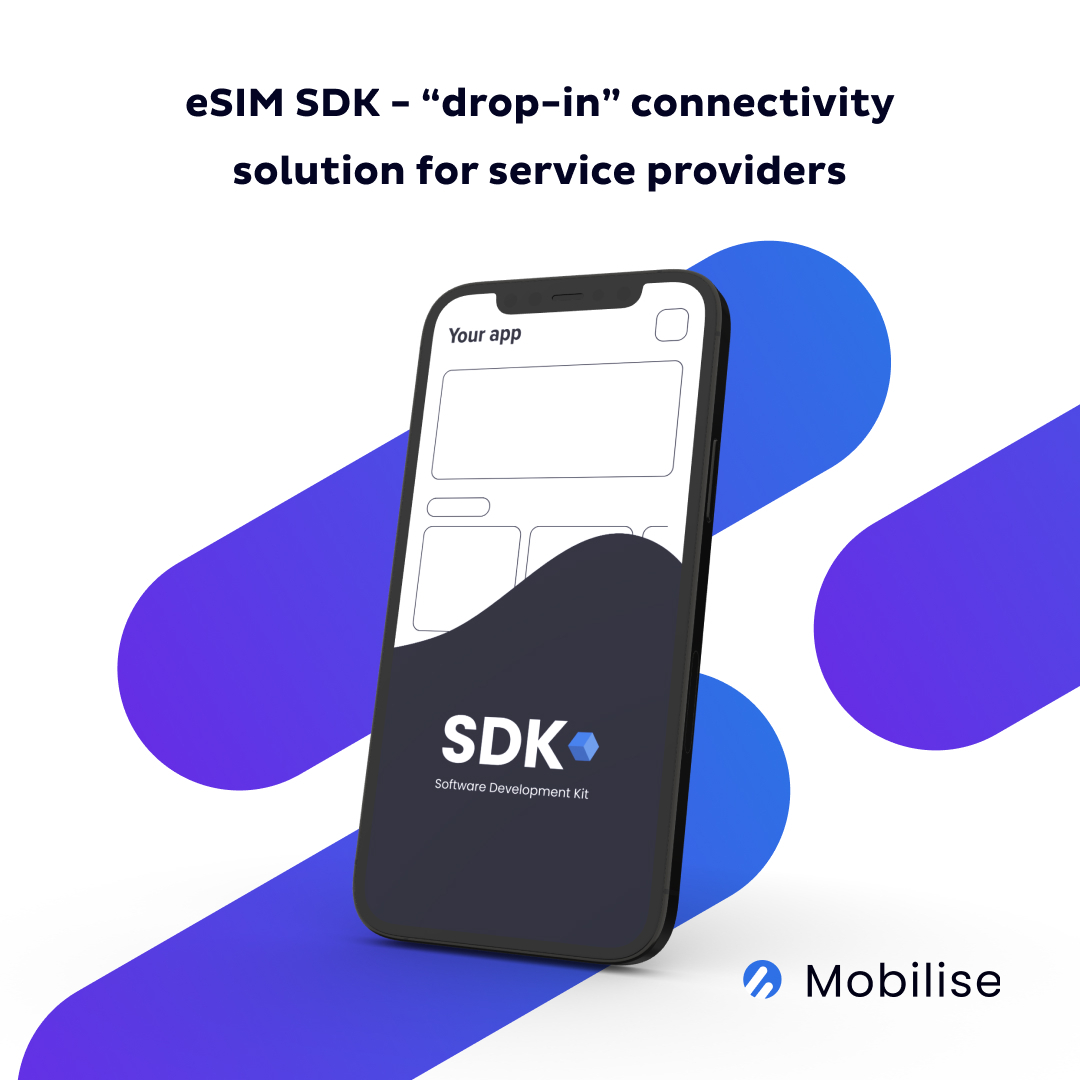
Conclusion
To survive in the constantly changing and fiercely competitive hotel industry, businesses need to find a competitive edge. One that will help them stay on top of the game. The best bet is to be quick to respond to the changing market, demographics and customer preferences and take advantage of the latest technology developments.
By embracing the potential of eSIMs, hotels can address the evolving needs of travellers. Enhance guest experiences, reduce operational costs, and offer unique premium features. The eSIM revolution presents a strategic opportunity for hotels to not only recover but thrive in the post-pandemic world. As the travel landscape continues to transform, staying ahead of the curve with cutting-edge technologies is the key to long-term success.



